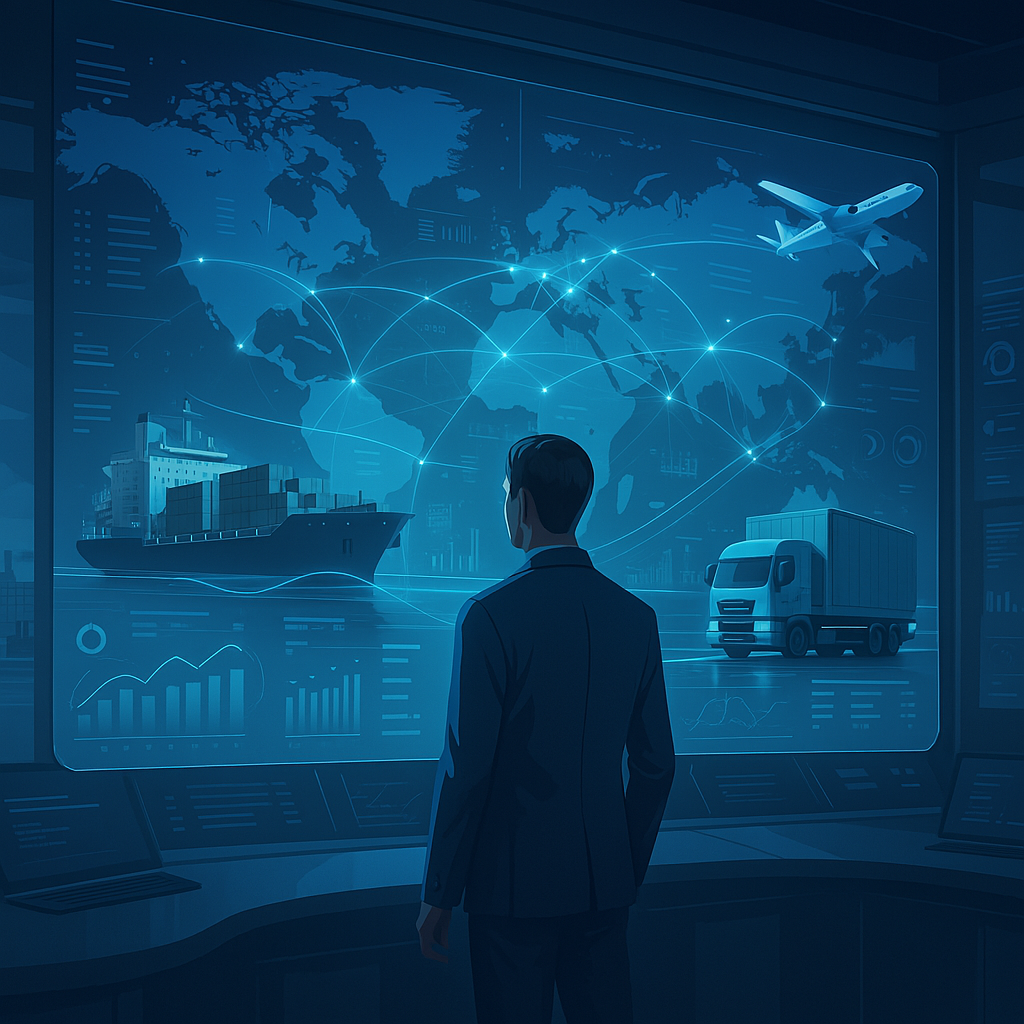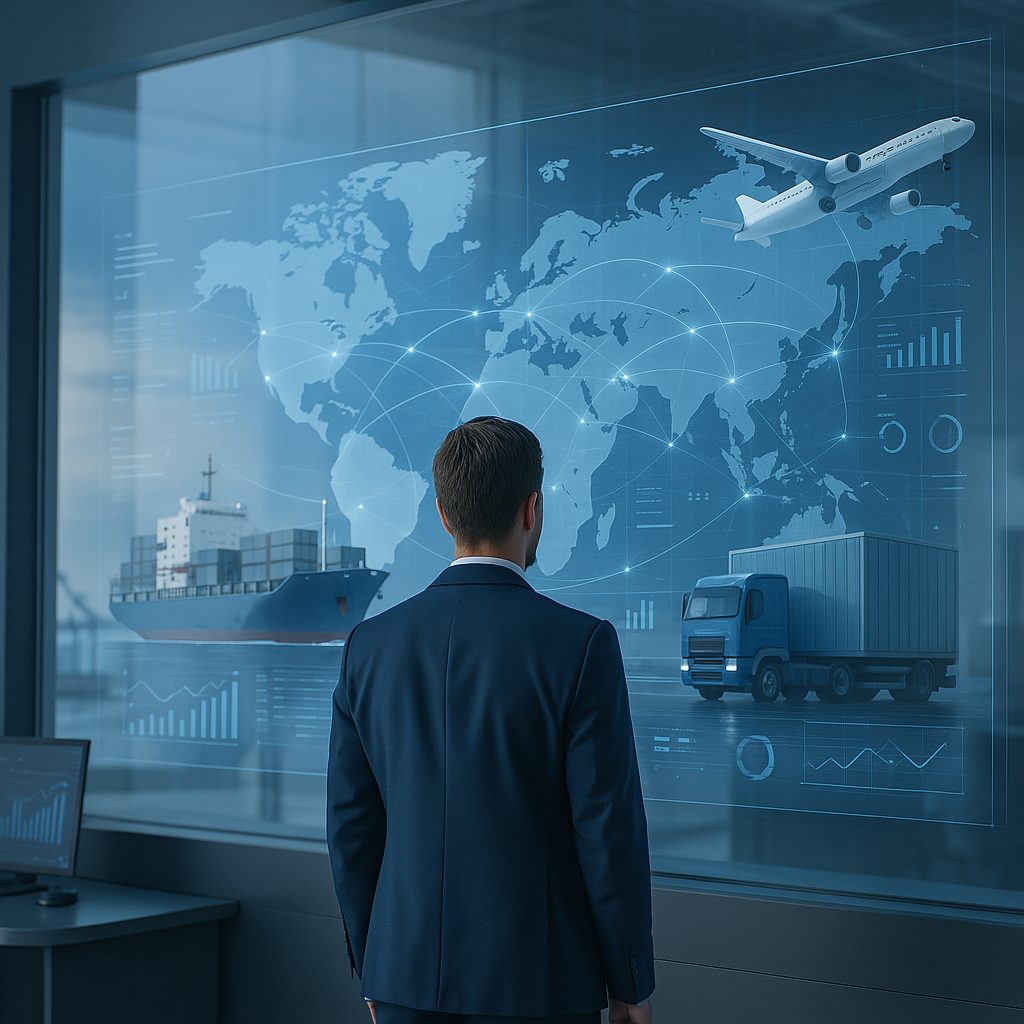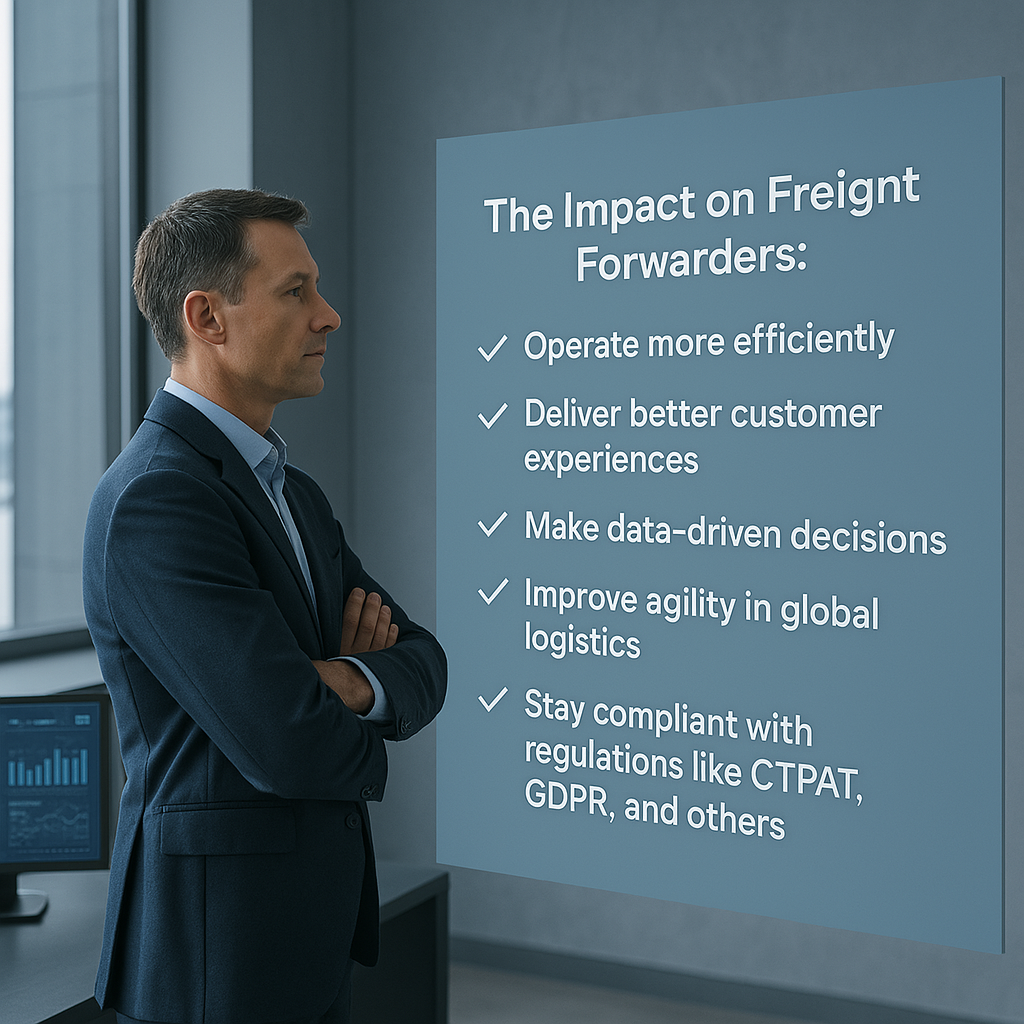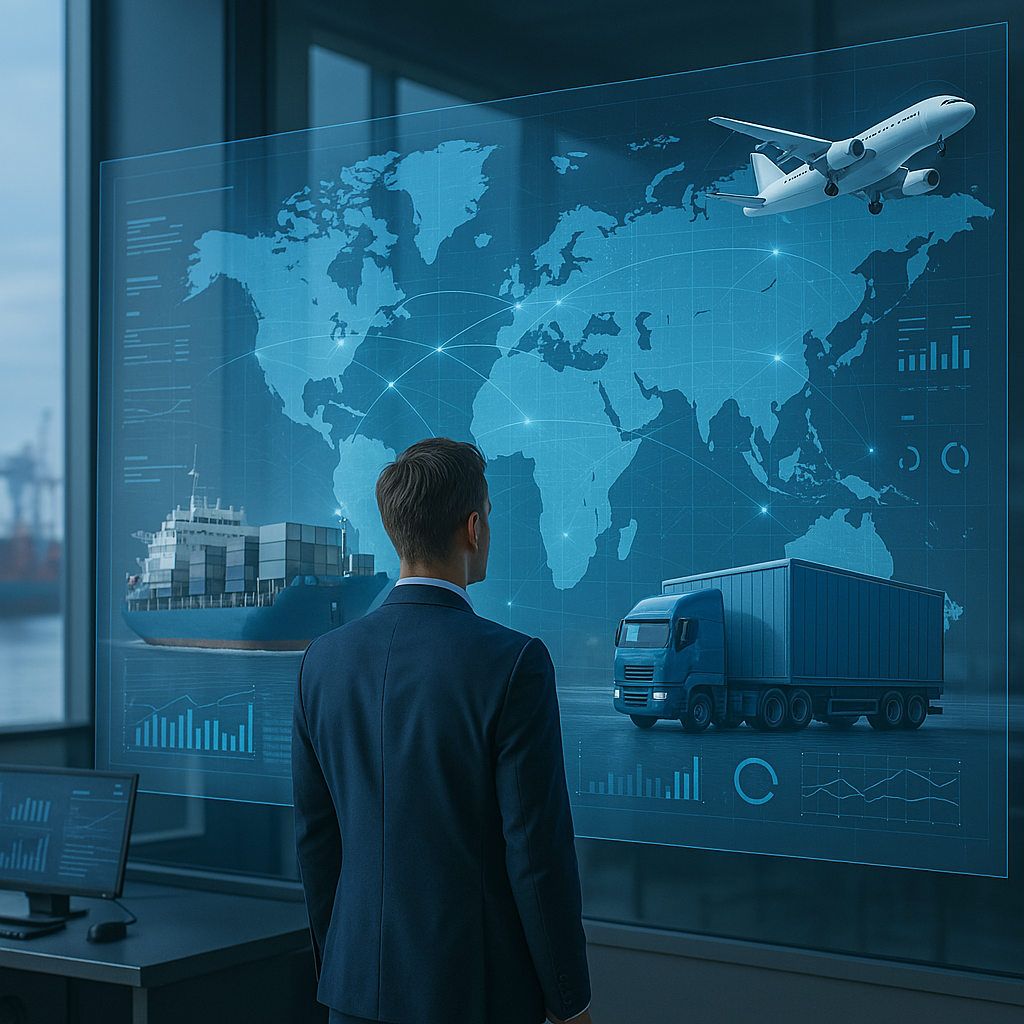The Digital Transformation of Freight Forwarding: A 2025 Guide

💡 What Is Digital Transformation in Freight?
Digital transformation refers to the integration of digital technologies into all areas of freight forwarding — fundamentally changing how forwarders operate and deliver value. This includes:
- 📦 Digital documentation (e.g. eAWB, eB/L, customs forms)
- 🔗 System integration (with carriers, warehouses, and customs)
- 📊 Data analytics and AI for smarter decision-making
- 📍 Real-time tracking and visibility tools
- ☁️ Cloud-based freight management platforms
At its core, it’s about replacing manual, disconnected workflows with connected, intelligent systems.
🚚 Why Is This Shift So Critical in 2025?
1. Rising Customer Expectations
Shippers want visibility, speed, and simplicity. They expect the ability to:
- Track cargo in real time
- Receive automatic notifications
- Access digital documents on demand
Without digital tools, freight forwarders risk falling behind competitors who can offer these experiences seamlessly.
2. Global Trade Complexity
From geopolitical shifts to supply chain disruptions, the freight environment is unpredictable. Digitally-enabled forwarders can adapt faster through:
- Predictive analytics
- Dynamic route planning
- Automated compliance tools
3. Cost Efficiency and Scalability
Manual processes lead to delays, errors, and higher costs. Digital solutions help:
- Reduce labor-intensive tasks
- Speed up bookings and documentation
Scale operations without proportional headcount increases

🔧 Key Technologies Powering the Transformation
🔍 Freight Management Software (FMS)
Modern FMS platforms centralize all operations — from quoting and bookings to tracking and invoicing. They also allow integration with external APIs like customs, carriers, and accounting tools.
🤖 Automation and AI
Tasks like freight rate comparison, container tracking, and document generation are now automated using AI — reducing errors and freeing up staff to focus on value-added tasks.
☁️ Cloud Infrastructure
Cloud-based systems enable teams to collaborate from anywhere, reduce IT costs, and ensure system uptime and data security.
📲 Mobile Access
Digital tools enable real-time communication with clients and partners on the go — improving responsiveness and customer satisfaction.
🌍 The Impact on Freight Forwarders
Digital transformation enables freight forwarders to:
- ✅ Operate more efficiently
- ✅ Deliver better customer experiences
- ✅ Make data-driven decisions
- ✅ Improve agility in global logistics
- ✅ Stay compliant with regulations like CTPAT, GDPR, and others
It’s no longer just about moving cargo — it’s about managing intelligent logistics networks.

🔮 What’s Next: The Future of Digital Freight
As 2025 continues, we’ll see:
- More API-driven ecosystems connecting forwarders with partners in real time
- AI-led decision-making becoming the standard
- Blockchain adoption for secure, transparent documentation
- IoT and sensor data driving predictive logistics
- Sustainability metrics embedded into freight platforms
Those who embrace digital change will shape the future of logistics. Those who don’t may be left behind.

📌 Conclusion: Now Is the Time to Go Digital
The digital transformation of freight is reshaping the industry in profound ways. It’s not just about adopting technology — it’s about creating smarter, scalable, and customer-centric freight operations.
Freight forwarders who modernize today will lead tomorrow.
